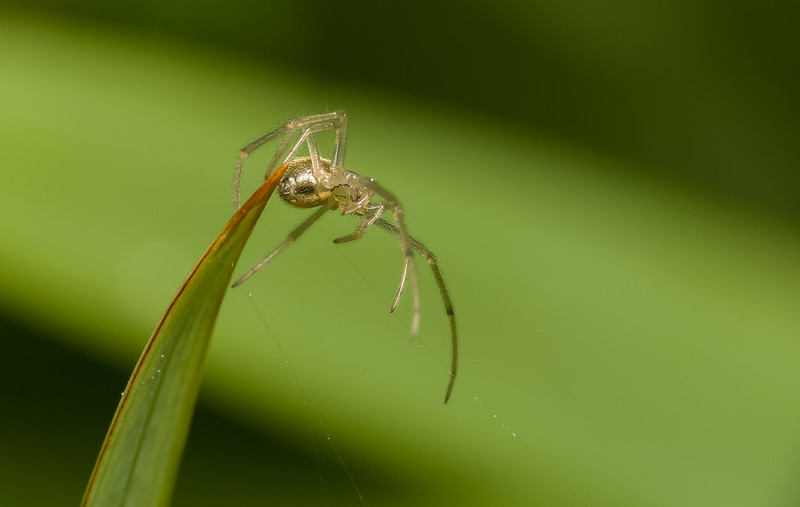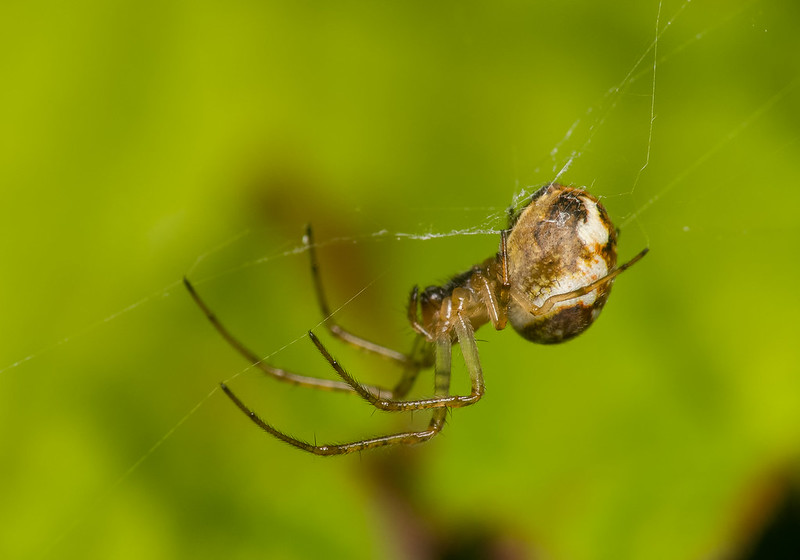GardenersHelper
In Memoriam
- Messages
- 6,344
- Name
- Nick
- Edit My Images
- Yes
I've been trying out several different diffusion arrangements over the past few days. Two things I'm obviously interested in are how much diffusion different materials provide, and how much flash power they need. I did a little comparison today.
You need to use diffusers out in the field to find out whether they are any good or not, and I've been doing that. But it's difficult to get any meaningful "like for like" comparisons out in the field. So I used an artificial setup which allowed me to do a (more or less) "like for like" comparison.
I had my FZ200 on a tripod and took photos of this test scene. This is what it looked like using my pie tin diffuser with all the diffusion material removed.

0739 01 Bare bowl - no diffusion layers 1over32-- P1890523 1300h by gardenersassistant, on Flickr
I used 13 setups and for each setup captured images with the flash power going up by 1/3 stop at a time. I started each sequence with it obviously too dark and finished when the blinkies on the camera LCD showed a horizontal band of overexposure along the battery. In each case the first overexposure was a tiny area (a dot, much smaller than in the above image) on the silver connector on the top of the battery. That got larger as the flash power went up and a small area blew out at the right hand end of the gold area. Finally the bright horizontal area shown in the above image blew out. For each setup I noted down what the flash power was when the first tiny blinky appeared and when there was a complete horizontal area blinking.
The setups I used are listed in the following table, and you can see pictures of most of the setups in this set at Flickr. This post has a description of some of them, explaining some peculiar names like "3.5 layer diffuser".
The orange lines in the table show the flash power for each setup from the first sign of over-exposure to the complete band of over-exposure along the battery. I suspect that shorter lines imply better diffusion, but even if that is the case, given the plus or minus 1/3 stop nature of the numbers I wouldn't want to make too much of that.
I wanted to compare the flash power needed by each setup so I tried to pick images from each set that had the same overall brightness, so I could see how much flash power each had needed. It turns out to be not so simple. The different setups throw out light of varying intensity at various angles, so which image is brighter depends on which part of the image you look at. So I had to make some judgement calls, and so this is a bit approximate, but give or take 1/3 stop here or there, I think it gives a good idea of how the setups differ in terms of the power they soak up (and hence the implications for the recycling time needed between shots). The "0" entries in the table show the flash power used for the images I selected for comparison. The selected images can be seen in this set over at Flickr.

0739 14 Flash power and blown highlights for various diffusion arrangements by gardenersassistant, on Flickr
Assessing the quality of the diffusion provided by these materials is more tricky. I wouldn't want to be too certain about drawing conclusions from this very limited comparison of a single, artificial scene. That said, it does seem to me that parchment paper is worth considering. I tried it out in the garden today, using just a single layer of parchment paper most of the time. As with most of the other test sessions I've done recently with different setups I haven't yet looked at them carefully on the PC, but on the camera LCD they looked quite promising, and parchment paper has the advantage of being very light. In contrast, the frosted perspex is rigid, 3mm thick, and heavy enough to unbalance the rig. It proved awkward and tiring to use, and somewhat limiting as I didn't feel confident about using it at some of the odd angles I sometimes use because the perspex sheet tends to slide around. However, it has the advantage that it diffuses well and does this without soaking up much light. A thinner sheet, if I can find one, is something I'd like to try.
Looking just at these test results, I felt my "4.5 layer" diffuser seemed to give the best results in terms of the diffusion (especially when comparing the most difficult area, the silver connector). It needs a lot more power than some of the other setups, but not so much as to make it unusable. I'll have a better idea of how well the different setups and materials work when I've gone through the several test sessions in the garden that I haven't worked on yet.
At the moment though I remain disappointed that none of these arrangements seem to handle subjects with shiny surfaces very well, especially curved shiny surfaces. It does depends a lot on the angle - some angles look fine but some look horrible. I'd like something that could more reliably give, at worst, diffuse and soft-edged highlight areas. Maybe I'm asking too much. I don't know.
You need to use diffusers out in the field to find out whether they are any good or not, and I've been doing that. But it's difficult to get any meaningful "like for like" comparisons out in the field. So I used an artificial setup which allowed me to do a (more or less) "like for like" comparison.
I had my FZ200 on a tripod and took photos of this test scene. This is what it looked like using my pie tin diffuser with all the diffusion material removed.

0739 01 Bare bowl - no diffusion layers 1over32-- P1890523 1300h by gardenersassistant, on Flickr
I used 13 setups and for each setup captured images with the flash power going up by 1/3 stop at a time. I started each sequence with it obviously too dark and finished when the blinkies on the camera LCD showed a horizontal band of overexposure along the battery. In each case the first overexposure was a tiny area (a dot, much smaller than in the above image) on the silver connector on the top of the battery. That got larger as the flash power went up and a small area blew out at the right hand end of the gold area. Finally the bright horizontal area shown in the above image blew out. For each setup I noted down what the flash power was when the first tiny blinky appeared and when there was a complete horizontal area blinking.
The setups I used are listed in the following table, and you can see pictures of most of the setups in this set at Flickr. This post has a description of some of them, explaining some peculiar names like "3.5 layer diffuser".
The orange lines in the table show the flash power for each setup from the first sign of over-exposure to the complete band of over-exposure along the battery. I suspect that shorter lines imply better diffusion, but even if that is the case, given the plus or minus 1/3 stop nature of the numbers I wouldn't want to make too much of that.
I wanted to compare the flash power needed by each setup so I tried to pick images from each set that had the same overall brightness, so I could see how much flash power each had needed. It turns out to be not so simple. The different setups throw out light of varying intensity at various angles, so which image is brighter depends on which part of the image you look at. So I had to make some judgement calls, and so this is a bit approximate, but give or take 1/3 stop here or there, I think it gives a good idea of how the setups differ in terms of the power they soak up (and hence the implications for the recycling time needed between shots). The "0" entries in the table show the flash power used for the images I selected for comparison. The selected images can be seen in this set over at Flickr.

0739 14 Flash power and blown highlights for various diffusion arrangements by gardenersassistant, on Flickr
Assessing the quality of the diffusion provided by these materials is more tricky. I wouldn't want to be too certain about drawing conclusions from this very limited comparison of a single, artificial scene. That said, it does seem to me that parchment paper is worth considering. I tried it out in the garden today, using just a single layer of parchment paper most of the time. As with most of the other test sessions I've done recently with different setups I haven't yet looked at them carefully on the PC, but on the camera LCD they looked quite promising, and parchment paper has the advantage of being very light. In contrast, the frosted perspex is rigid, 3mm thick, and heavy enough to unbalance the rig. It proved awkward and tiring to use, and somewhat limiting as I didn't feel confident about using it at some of the odd angles I sometimes use because the perspex sheet tends to slide around. However, it has the advantage that it diffuses well and does this without soaking up much light. A thinner sheet, if I can find one, is something I'd like to try.
Looking just at these test results, I felt my "4.5 layer" diffuser seemed to give the best results in terms of the diffusion (especially when comparing the most difficult area, the silver connector). It needs a lot more power than some of the other setups, but not so much as to make it unusable. I'll have a better idea of how well the different setups and materials work when I've gone through the several test sessions in the garden that I haven't worked on yet.
At the moment though I remain disappointed that none of these arrangements seem to handle subjects with shiny surfaces very well, especially curved shiny surfaces. It does depends a lot on the angle - some angles look fine but some look horrible. I'd like something that could more reliably give, at worst, diffuse and soft-edged highlight areas. Maybe I'm asking too much. I don't know.








